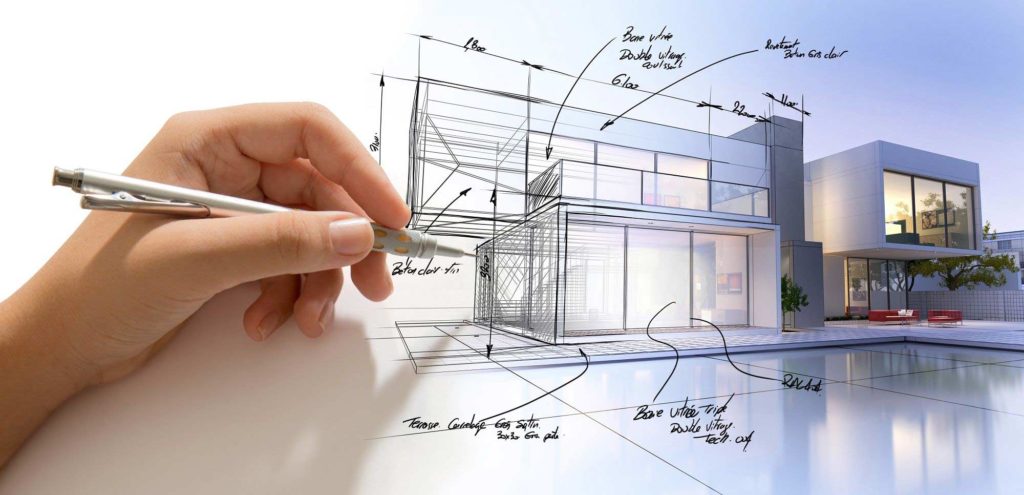Architect Insights on Balancing Form and Function
Wiki Article
Understanding the Diverse Job Paths Available for Aspiring Architect
As a hopeful Architect, you have a world of career courses waiting for you. Whether you're attracted to traditional architecture or the subtleties of sustainable style, there's a specific niche that aligns with your rate of interests.Conventional Design: Creating Structures and Frameworks
Traditional design focuses on making structures and structures that mix performance with aesthetic appeal. Your styles can mirror social heritage, showcasing local traditions while fulfilling modern requirements.You'll create skills in preparing, model-making, and site evaluation, permitting you to visualize and interact your ideas properly. Involving with clients, you'll require to recognize their vision and convert it right into viable styles.
Additionally, constructing codes and sustainability practices are vital in your work, ensuring your frameworks are ecologically friendly and safe. As you expand in your profession, you'll find chances in residential, business, or perhaps repair projects, each offering unique obstacles. Accepting standard architecture leads the way for a meeting occupation that admires the past while shaping the future.
Urban Preparation: Forming Areas and Public Spaces
As an ambitious Architect, you can play a crucial duty as a metropolitan planner, transforming exactly how communities function and connect. By employing neighborhood involvement techniques, you'll guarantee that citizens have a voice in shaping their atmosphere. And also, integrating sustainable design principles will assist develop rooms that not only satisfy today's requirements however additionally secure the future.Role of Urban Planners
While many may assume of engineers as the single visionaries behind structures, city coordinators play an important function in shaping the more comprehensive landscape of areas and public spaces. By collaborating with different stakeholders, you'll assist create parks, transportation systems, and domestic locations that advertise social communication and access. Your expertise in spatial design and community dynamics allows you to picture future growth while maintaining cultural heritage.Area Interaction Techniques
Effective area interaction approaches are important for urban planners to ensure that the voices of citizens are heard and valued in the planning process. To promote meaningful dialogue, you need to prioritize open forums and workshops where community participants can share their concepts and problems. By proactively listening and integrating responses, you'll develop rooms that mirror the area's demands, eventually leading to more successful and sustainable urban atmospheres.Lasting Style Principles
When creating metropolitan spaces, integrating sustainable style concepts is essential for producing atmospheres that prosper both environmentally and socially. Consider integrating eco-friendly spaces, like yards and parks, to boost biodiversity and boost air quality.Designing with water preservation in mind is also essential-- consider rainfall gardens and permeable surfaces to handle stormwater. Entailing community members throughout the preparation process guarantees that the rooms you produce fulfill their demands and motivate social communication. By embracing these concepts, you'll contribute to vivid, sustainable city landscapes that benefit every person.

Landscape Style: Producing Sustainable Exterior Atmospheres
As you explore landscape style, you'll find vital layout concepts that produce gorgeous and useful outdoor areas. Sustainable methods play an essential duty in ensuring these environments grow while reducing ecological effect. And also, you'll discover a variety of occupation opportunities that permit you to make a genuine difference in exactly how individuals communicate with nature.Layout Principles in Landscape
Comprehending style concepts in landscape architecture is important for producing lasting exterior settings that integrate with nature. You'll require to consider aspects like scale, balance, and proportion to guarantee your layouts feel cohesive and welcoming. In addition, pay focus to seasonal modifications, making with materials that complement the environments year-round.Lasting Practices Introduction
Sustainable techniques in landscape style not just focus on visual appeals however likewise focus on ecological wellness and resource preservation. You can design areas that promote dirt health, such as using natural products and exercising permaculture concepts. Ultimately, these practices ensure your layouts benefit both people and the environment for years to come.Profession Opportunities Expedition
With a strong structure in lasting practices, landscape architecture offers a selection of occupation paths that enable you to make a significant impact on the setting. Urban coordinators frequently collaborate with landscape architects to develop green rooms in metropolitan setups, enhancing city livability. If you're enthusiastic about education and learning, think about becoming a landscape design teacher, inspiring future generations.Lasting Design: Concentrating on Eco-Friendly Practices
As you explore your occupation in design, embracing green practices can establish you apart in an affordable field. Lasting style concentrates on creating buildings that decrease ecological effect while boosting resident wellness. By including renewable products, energy-efficient systems, and sustainable structure strategies, you'll contribute to a greener future.Start by getting understanding of green qualifications like LEED or BREEAM, which can bolster your credentials. Think about just how all-natural light, air flow, and thermal efficiency can maximize design. Collaborate with designers and environmental consultants to introduce solutions that lower waste and conserve resources.
Don't fail to remember the significance of area involvement-- engaging regional stakeholders can motivate layouts that harmonize with the environment. As clients progressively prioritize sustainability, your proficiency in green practices will not only attract projects but likewise meet your interest for liable design. Embrace this crucial facet of the career, and enjoy your career flourish.
Historic Preservation: Safeguarding and Recovering Cultural Heritage
While you commence on your architectural trip, think about the essential duty of historical conservation in preserving our cultural heritage. This area concentrates on the protection and repair of substantial buildings, sites, and structures that inform the tales of our past. By engaging in historic conservation, you'll aid guard the building legacy that forms community identification.As a historic conservation Architect, you'll examine historic importance and analyze the condition of frameworks. You'll work closely with conservationists and chroniclers to guarantee authentic remediation methods are employed. This career course allows you to blend creativity with research study, allowing you to develop remedies that appreciate initial materials and workmanship.
Your work not just adds to sustainability by reusing existing structures however additionally fosters a sense of pride within areas. Embracing this course will certainly help you end up being a guardian of history, protecting the tales and aesthetics that enrich our lives.
Inside Design: Enhancing Indoor Spaces
Historical preservation and indoor architecture both share a commitment to boosting the built setting, but they concentrate click this on various facets. While historical conservation emphasizes preserving a framework's social and historic worth, indoor architecture zeroes in on enhancing interior spaces for performance and aesthetic appeals.As an ambitious Architect, you'll locate that interior design permits you to mix creativity with technical skills. You'll develop spaces that not only look excellent but likewise promote comfort and efficiency. This field includes check this comprehending exactly how light, color, and materials interact within a space, affecting mood and usability.
You'll work with various jobs, from domestic homes to commercial offices, guaranteeing that each atmosphere meets the needs of its residents. By prioritizing customer experience, you can change insides into useful and inspiring areas, making a significant impact on just how individuals connect with their surroundings. Accept the possibility to boost interior atmospheres and shape the method people live and work.
Industrial Style: Merging Functionality With Aesthetics
Industrial layout plays an important role in producing items that seamlessly mix appearances with performance, guaranteeing that what you use daily is not only visually enticing however also functional. As a hopeful Architect, you could engage yourself in this area, focusing on creating whatever from furnishings to customer electronic devices. Your work entails comprehending user demands, materials, and making processes, permitting you to create cutting-edge options that enhance daily experiences.In commercial layout, you'll frequently collaborate with suppliers, designers, and marketing experts, making sure that your styles are not just gorgeous but also feasible. This job course uses a dynamic setting where imagination meets functionality, making it a fulfilling selection for designers interested in shaping the items of tomorrow.
Frequently Asked Questions
What Educational Qualifications Do I Need to Become an Engineer?
To end up being an engineer, you'll require an expert degree in style, commonly a Bachelor's or Master's. Furthermore, you'll have to finish a teaching fellowship and pass the Architect Registration Assessment to practice legitimately.Are There Qualification Needs for Different Building Profession Paths?
Yes, there're qualification demands for various architectural courses. Architect. You'll require to pass examinations, full internships, and sometimes pursue specialized training, relying on your chosen emphasis, like landscape architecture, metropolitan design, or historic preservationWhat Software Skills Are Crucial for Designers Today?

Just How Can I Gain Practical Experience While Examining Style?
You can get practical experience by interning at building firms, joining style competitions, offering for community tasks, or collaborating with schoolmates on real-world tasks. These opportunities improve your abilities and build beneficial connections in the industry.What Job Opportunities Exist Outdoors Conventional Style Firms?
You can explore different work opportunities outside typical architecture firms, like city planning, interior decoration, landscape style, construction administration, realty growth, or even roles in sustainability consulting. Each offers unique challenges and benefits.Whether you're attracted to traditional design or the nuances of lasting style, there's a niche that lines up with your rate of interests.When developing metropolitan rooms, incorporating sustainable style concepts is crucial for developing atmospheres that prosper both environmentally and socially.As you discover landscape architecture, you'll discover important design concepts that develop visite site gorgeous and useful outdoor spaces.Comprehending style concepts in landscape architecture is crucial for creating sustainable outdoor environments that harmonize with nature.In industrial design, you'll frequently work together with marketing experts, makers, and designers, making sure that your styles are not only lovely but also feasible.
Report this wiki page